It's a grand strategy game that has you play as a major European power, starting in the 16th century. You explore and conquer the new world and eventually vie for dominance of Europe with the other major powers. It's clearly a spiritual predecessor to Paradox Interactive's various Europa Universalis / Crusader Kings / Victoria games.
The game world is divided into provinces belonging to some player, and each province is made of landscape tiles, some of which can produce raw materials. To get access to these resources, the tiles first need to be developed, and then connected up to the player's capital by a land or sea route.
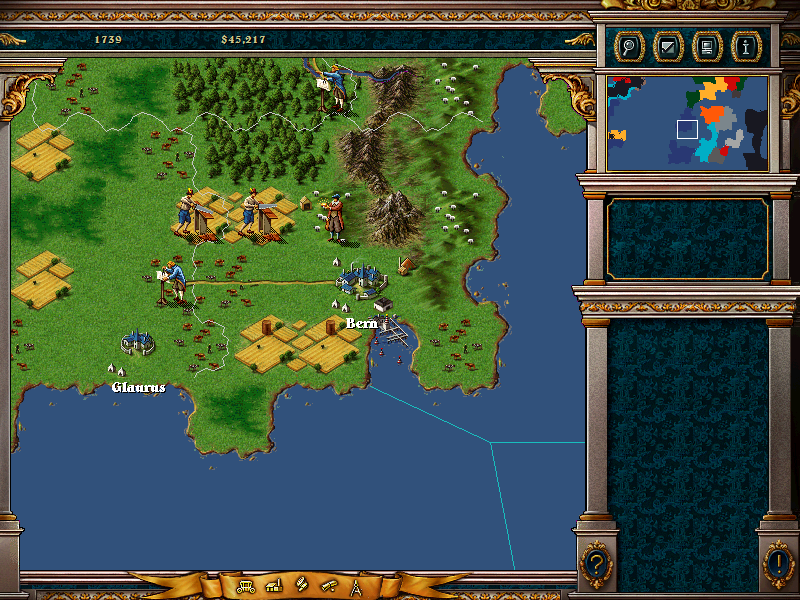
Once in the capital, the raw materials can get processed into finished resources by the nation's workforce. The finished resources can then be used to create further tile improvements, military units, additional shipping capacity, fortifications, or used to hire more workers. Workers and troops do need food, however, so you must also expand your food production. Furthermore, skilled workers want luxuries from the new world, and you need money to do research and fund conquests, which you can acquire through trade or the import of precious materials like metals and gems from the new world.
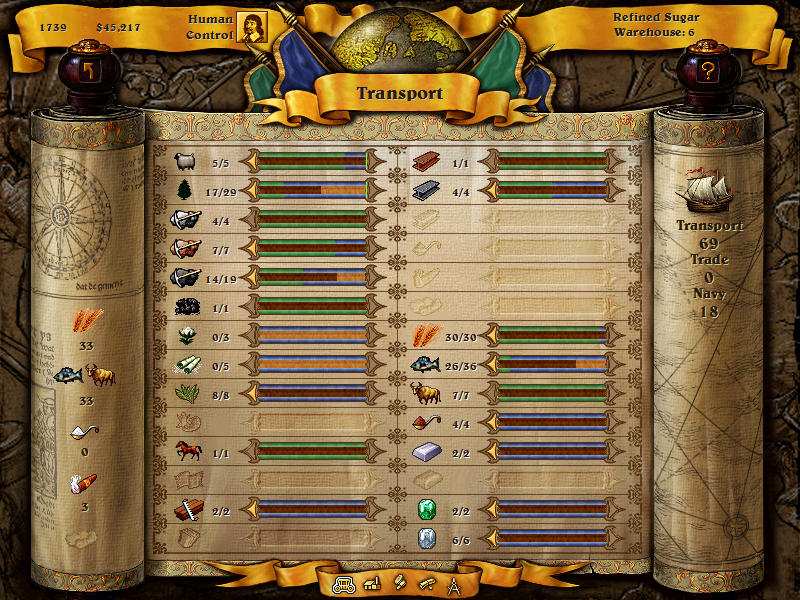
This sounds like a lot, but the game lays it out in a very clean fashion, allowing you to allocate your resources as you see fit. And this resource allocation matters: it's a game for people who like to plan out dependencies. Have lots of iron? Useless without lots of wood. Lots of resources but no fleet to bring it in? Tough luck, should have planned better. The game doesn't force you to commit to a path: you can switch industrial production from one turn to the next, or turn half your workers into soldiers if you have the resources. But creating an empire must be a carefully balanced upwards spiral of all your concerns - by mid-game, the difference between a well-managed empire and one stunted by bad decisions is vast.
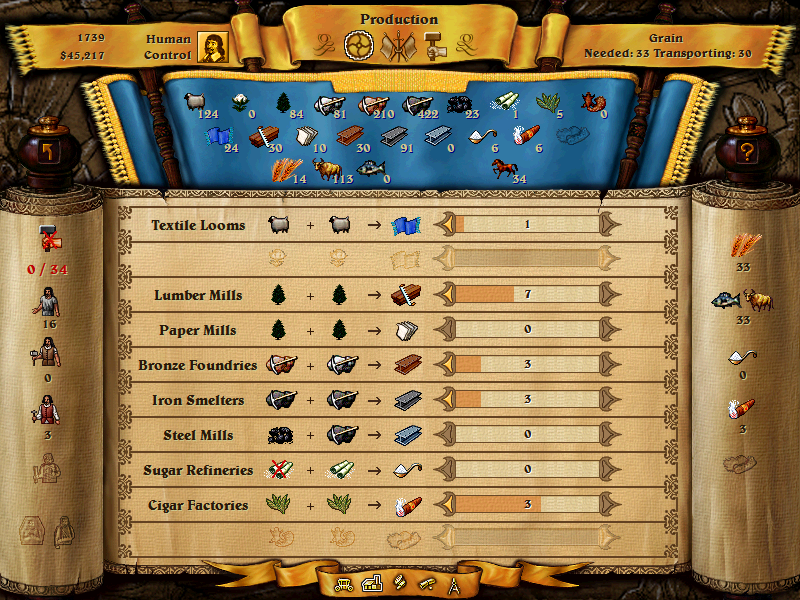
This is not to say that the game is a pure economic simulation: there's plenty of conquest too, as much as you want. Strategic conquest happens at the level of provinces. The turn-based tactical combat is fairly simple but effective, relying on positioning and applying the right force at the right point. (And it can be turned off if you want.) At a strategic level, the AI is probably not as clever as it could be, but there's plenty of thinking to be done in terms of where to attack, where to feint, blockade, dig in.
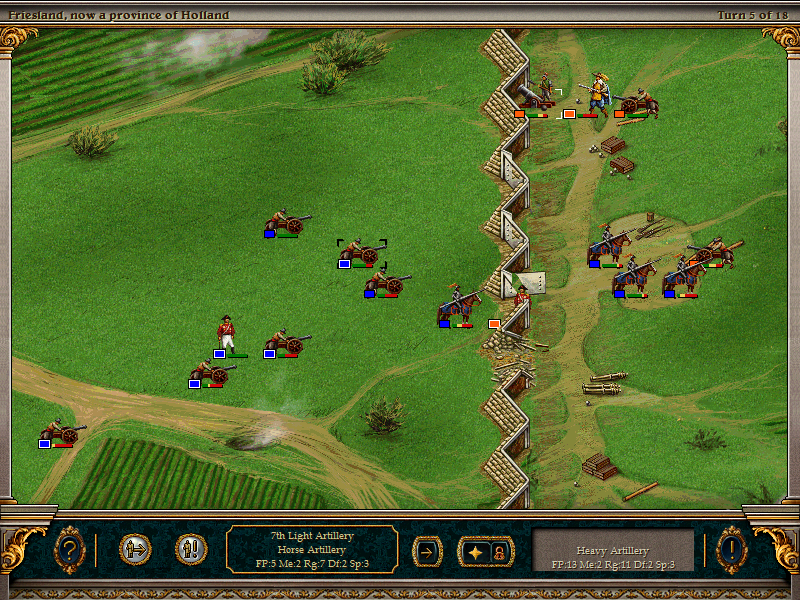
Having given an enthusiastic overview of the game, I'm going to dig into some of the reasons why I think this is such a great game.
The core problem with many 4X games, especially the Civilization series, is that the game really bogs down over time. To be successful, you must expand and conquer, but this expansion means that you have an ever-increasing number of bases (cities, planets) to administer. At the start of the game, when you have only one or a handful of bases, each detailed management decision is important, but near the end, the game becomes a slog of making lots of little rote decisions.
Imperialism II cuts through this whole problem by centering all economic activity on your capital. All industrial production and unit creation is done there, and all resources gathered are stored in a single pool. This would seem an oversimplification, but in the context of 16th-19th century empires, it's sufficiently accurate.
A second, more subtle simplification is that each resource tile can only produce one thing. There's no decisions to be made about how to develop resource tiles, only which ones to prioritize. This simplification allows Imperialism II to have a pretty complex economy with more than a dozen different resource types. Contrast this especially with Colonization, which has an equally large number of resource types but with resource pools and production local to each town, resulting in an utter slog.
Strategic conquest is similarly simplified in a useful way: instead of moving troops tile-by-tile, you simply choose which province you'd like to move them to. For attacks, the province has to be adjacent or have a beachhead established from the sea. This removes a lot of tedious walking troops around, where you're forced to choose positioning dozens of times a turn just in case it matters. In Imperialism II, you only have to make such fine-grained movement decisions once you're in actual combat, where it matters. Again, the setting arguably works well here, with fights happening on actual battlefields - no maneuver or guerrilla warfare here, so it's OK to be simple about strategic troop movements.
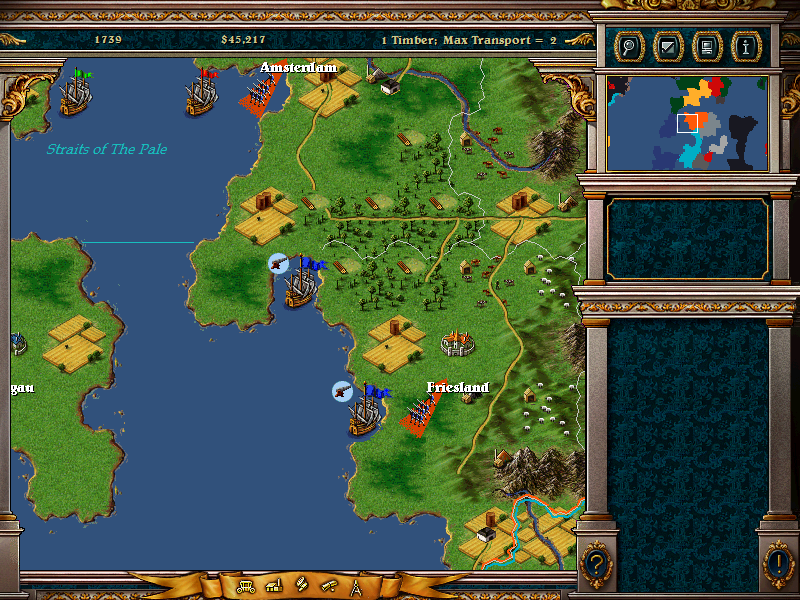
The consequence of these design decisions is that while in a Civilization-type game, the complexity of a turn in the endgame can be two orders of magnitude greater than a turn at the start, the multiplier in Imperialism II is maybe a factor of... three. You have some more provinces to fortify and develop, some more resource types to juggle, and you might fight three battles instead of one in a turn, but that's about it. This means that Imperialism II is a game I actually play all the way through to the victory screen without entering a haze of suffering for the final hours or quitting the game once I'm ahead enough that I know I'd probably win.
There's a final thing that the game did really well: graphics. Yes, for modern sensibilities they may seem a little subpar, but look: they're clean, consistent, readable, and remarkably free of little display errors. While I don't play Imperialism II to be overwhelmed by graphical glory, the experience is by no means unpleasant. Pointless 3D graphics in turn-based strategy games are one of my pet peeves, and this game got lucky in that it's just too old for anyone to have been tempted by that route, but new enough to have a decent resolution and bit depth. It's probably nostalgia on my part, much like the fetishization of games a decade older by 8-bit fanatics, but for me, this sort of graphics provides a sweet spot of attractiveness versus readability.
Finally, having played this game a fair bit over the last few days, I've realized that it was a fairly big unconscious influence on Airships: Conquer the Skies, especially its budding strategic mode. So the question for me now is: are there parts of Imperialism II worth copying more directly? I am tempted to make the strategic game a pretty close facsimile...
